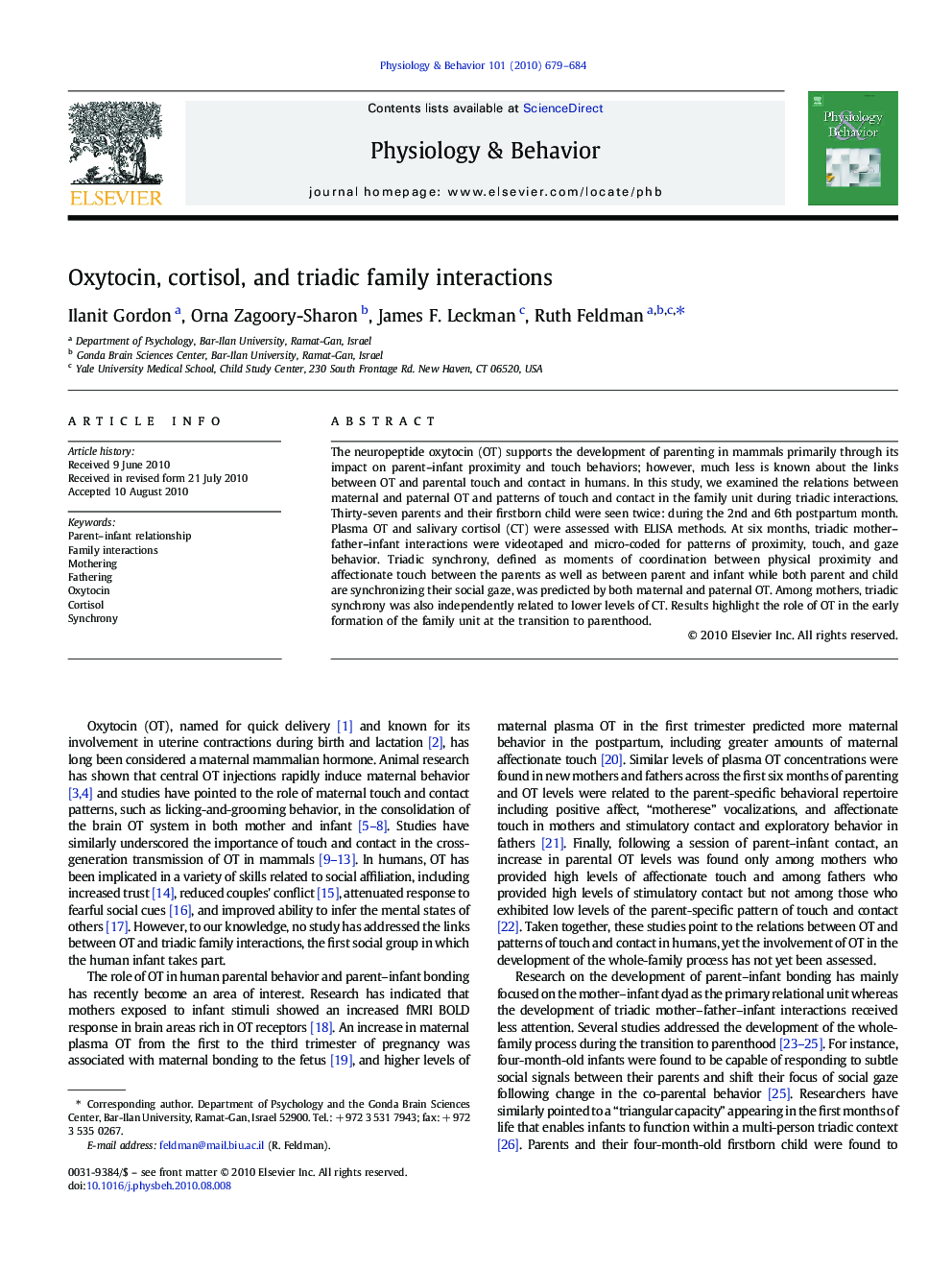| کد مقاله | کد نشریه | سال انتشار | مقاله انگلیسی | نسخه تمام متن |
|---|---|---|---|---|
| 2844810 | 1166365 | 2010 | 6 صفحه PDF | دانلود رایگان |

The neuropeptide oxytocin (OT) supports the development of parenting in mammals primarily through its impact on parent–infant proximity and touch behaviors; however, much less is known about the links between OT and parental touch and contact in humans. In this study, we examined the relations between maternal and paternal OT and patterns of touch and contact in the family unit during triadic interactions. Thirty-seven parents and their firstborn child were seen twice: during the 2nd and 6th postpartum month. Plasma OT and salivary cortisol (CT) were assessed with ELISA methods. At six months, triadic mother–father–infant interactions were videotaped and micro-coded for patterns of proximity, touch, and gaze behavior. Triadic synchrony, defined as moments of coordination between physical proximity and affectionate touch between the parents as well as between parent and infant while both parent and child are synchronizing their social gaze, was predicted by both maternal and paternal OT. Among mothers, triadic synchrony was also independently related to lower levels of CT. Results highlight the role of OT in the early formation of the family unit at the transition to parenthood.
Research Highlights
► This study examines the associations between two hormones – oxytocin and cortisol – and the development of family interactions between mothers, fathers, and their 6-month-old firstborn child. Results showed that both maternal and paternal oxytocin predicted higher levels of triadic synchrony — moments during family interactions when both parents and child are in physical proximity and provide affectionate touch, and the parent is coordinating social gaze with the child. Among mothers only, cortisol was related to lower levels of family synchrony. These findings are important in showing how oxytocin and cortisol contribute to the infant's first interaction within a social group — the family.
Journal: Physiology & Behavior - Volume 101, Issue 5, 2 December 2010, Pages 679–684